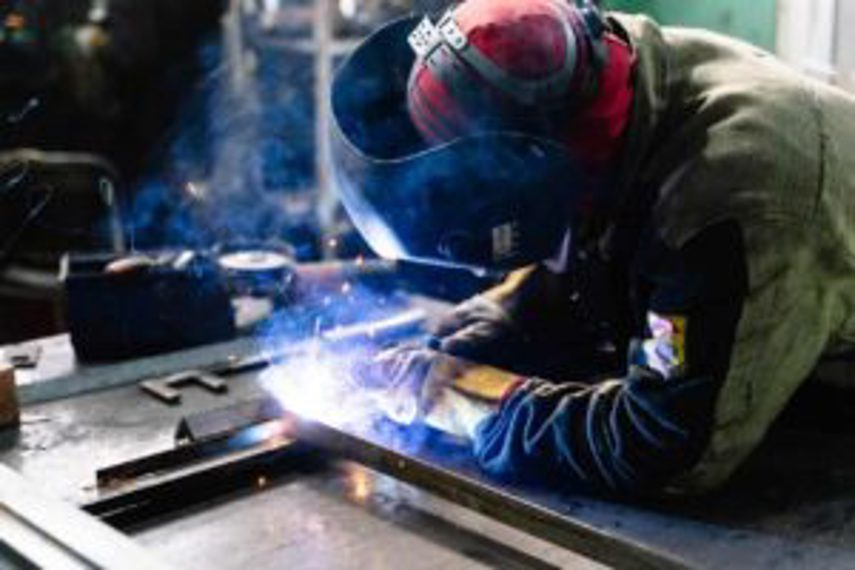
One piece flow is a lean manufacturing method that can be a central part of improving efficiency by increasing productivity, reducing waste and boosting quality. It’s also a way to keep your manufacturing inventory in check, since goods are produced according to demand and work in progress is reduced.
So is your business suited to the one piece flow method – and what benefits could you see from using it? We answer these questions and more.
What is the definition of one piece flow?
Part of lean manufacturing, one piece flow is the practice of producing goods one by one. Also known as ‘single piece flow’, it follows the theory that it is sometimes more efficient to have a single product flowing between each process or step in the production line. This makes the process more economical and means items are finished more quickly for the customer.
The one piece flow method is typically contrasted with batch production, which is where products are put through each stage of the manufacturing in batches. On this model, the group or batch of products only moves onto the next stage of production once every item in the batch has completed the previous step. We’ll talk more about batch production below.
 One piece flow manufacturing can be a good way to improve output and quality – but only if your product and business are suited to this method
One piece flow manufacturing can be a good way to improve output and quality – but only if your product and business are suited to this method
Are one piece flow and flow production the same?
It’s also worth noting how one piece flow is different from flow production, as they can sometimes be confused. Typically, flow production is a mass production method that uses an automated assembly line to make large quantities of identical, standardised products – and so it has less need for a manual labour workforce. This means flow production is more suited to organisations that have a high rate of production and have the capital to invest in automated equipment.
Are one piece flow and continuous flow the same thing?
In short, yes – one piece flow and continuous flow are the same thing.
But confusingly, continuous flow is sometimes used interchangeably with flow production, which – as we've just seen – is different from one piece flow. So if you see the term ‘continuous flow’, be aware that this term is sometimes used in two different ways.
One piece flow vs batch production
Batch production is where a product is manufactured in ‘batches’. In other words, a particular quantity of items – for example 100 cookies – goes through each stage of the process together, not moving onto the next stage until every item is through.
There are a number of reasons why batch production is suitable for some businesses, including that this can give greater flexibility over the type of products being manufactured on the same machinery. It also allows for quality checks at every step, so a product isn’t moved onto the next process if it isn’t suitable.
Batch production frequently suits SMEs because the quantity of items being produced can be smaller, and it can also be adapted to create variations in items – and this is perfect for smaller production runs.
However, batch production has a few downsides, including lengthier production times and costs added to the process due to incomplete items – know as Work in Progress inventory (WIP) – having to be held onsite. That’s where one piece flow can come into play for SMEs. Because one item is always being ‘worked on’ at any point in the process, it allows a manufacturer to speed up the production and output of items, while reducing the risk of having cash flow stuck in a potentially uneconomical production line.
Of course, there are instances where batch production of an item simply can’t be ‘switched’ to one piece flow. In baking, for instance, there’s no point creating batter for one cookie, before passing it on to someone to bake in the oven, and repeating the steps until you have enough for a packet of biscuits. But it’s worth considering the differences between the two manufacturing methods, to ensure you have the right one working for you that meets the needs of your business.
 With single items being worked at each step, greater quality control is assured because defects are caught before several – or even hundreds – of items go through that step
With single items being worked at each step, greater quality control is assured because defects are caught before several – or even hundreds – of items go through that step
What are the benefits of one piece flow?
There are many benefits of one piece flow production. Closely aligned with the Just in Time system, and also a preferred method of lean manufacturers, it provides a production line that should:
- Cost less than a more traditional production process
- Reduce waste of time and resources
- Ultimately result in a high-quality output of products
These benefits can be further broken down to the following six points:
1. One piece flow optimises operation time
The most significant benefit of one piece flow is that in most cases it makes an assembly line far more productive. It’s faster and provides greater output as it’s a more efficient use of time.
- Watch this video for a simple but compelling example of why one piece flow works.
2. Quality control with one piece flow
Because only one piece is being worked on at each step, it's easier to track and identify issues and ensure they don’t affect other items in the production process. This contrasts with batch production, where if one item is damaged, it’s likely the rest of that batch is too.
3. One piece flow means less stock is required on hand
From storage costs to dated stock, there’s plenty that can go wrong with having too much inventory held onsite. When each step only needs to produce what is required for the next step, you’re keeping your manufacturing lean - producing items according to demand.
4. One piece flow minimises downtime
When products are flowing through a manufacturing plant one-by-one, downtime can be minimised - reducing the cost of waiting for items to come through, or bottlenecks at certain steps which can result in production up to that stage having to halt.
5. Increased customer satisfaction from one piece flow
Because one piece flow allows orders to be completed a lot faster, you can meet customer demand more effectively.
6. Production spaces are safer with one piece flow
With less stock waiting for the next step in the production process, and each step being able to flow easily from one to the next, you can often greatly improve the physical workspaces of your employees. They can be closer together, reducing movement needed between stations and time spent transporting items. Factories can be optimised for the flow of work, without having to worry about large storage facilities between stages.
 While one piece flow can have several benefits, downsides such as cost to implement and difficulties with producing a variety of products can mean it’s not the best option
While one piece flow can have several benefits, downsides such as cost to implement and difficulties with producing a variety of products can mean it’s not the best option
Are there disadvantages to one piece flow?
There are several potential disadvantages to one piece flow, the primary one being that it does not work well for every manufacturer and business. While in theory it may sound suitable, it doesn’t always work out so well in practice. So it’s important to carefully consider moving to this method.
There are four more specific disadvantages to one piece flow:
1. One piece flow isn't suitable if you have a varied product range
If you have a large variety of products and may not see efficiencies from this method because you're constantly having to adjust your production line.
2. Cost to switch to one piece flow
Investment for a one piece flow manufacturing plant can be expensive. To get the most out of this production method, the physical setup is crucial to maximise cost cutting. This can be risky if it doesn’t end up being a suitable manufacturing process for the types of items being produced.
3. You can’t ‘set and forget’ employees with one piece flow
It’s also risky to only train your employees to work on one stage of production. Depending on the item being produced, staff members could end up getting complacent when working on the same stage day in and day out. It’s important to provide variety to ensure employee satisfaction, as well as allowing your team to have capabilities that cover various aspects of the manufacturing process.
4. Variables and complexity are a no-go
The more simple the product, the better suited it is to one piece flow. If a manufacturer has items that require a number of variables, or are complex to produce, then it’s unlikely a one piece flow setup will work.
 Implementing one piece flow involves thinking about practical questions such as how your factory layout will need to be altered, and whether the change will have sufficient ROI
Implementing one piece flow involves thinking about practical questions such as how your factory layout will need to be altered, and whether the change will have sufficient ROI
How do manufacturers implement a one piece flow system?
Before implementing a one piece flow system, consider how suited this system is to your operations with these steps:
- Ask yourself if a one piece flow process could work for the items you produce. When considering this, think about the scale of your production, consistency between steps in the production process, downtime requirements, floor layout, workstation setup, and what equipment and automation you have available.
- Strategise the flow layout. Make sure each step can be broken down into equal parts to ensure time spent is the same between workstations. Focus on minimising physical movement between each step, and address the possibility of products sitting too long as WIP (work in progress).
- Calculate whether the cost to implement one piece flow will provide enough ROI.
- Measure your cycle time and takt time to ensure your production line will continue to meet customer demand.
- Reassess. Learn. Make changes. Repeat. Continually looking at your process and reviewing areas of improvement is key to maximising the benefits of one piece flow, just as it is with other manufacturing processes.
Other considerations for implementing one piece flow
Four other things you should have adequate knowledge of before embarking on one piece flow are:
1. The principle of flow in lean manufacturing
Flow is about creating a chain of assembly, without downtime in the production process. Every step flows from the one before, and to the one after.
2. How one piece flow uses the lean pull system
The ‘pull system’ in lean manufacturing refers to how when a customer places an order, they are essentially ‘pulling’ a product through the manufacturing process. For example, a cafe won’t make a cup of coffee until someone orders one. When they do, all the materials required for a cup of coffee are ‘pulled’ through the cafe’s production line.
The pull system is used in one piece flow because this method aims to accurately meet customer demand (Just in Time) – and without overproduction or underproduction.
3. Layout: A one piece flow cell
The layout of a one piece flow production line usually resembles a U or S shape. Each cell or workstation will carry out a particular task, and once it’s done, the product moves to the next cell. Using a U or S shape means there is less movement required between each step, allowing greater flow and efficiency in assembly.
4. Takt time (aka pulse) and one piece flow
Using takt time to calculate the required rate of production to meet demand allows manufacturers implementing one piece flow to have a greater control over how long the process has to be from start to finish, to ensure items are produced on time.
 The one piece flow method is applicable to a range of production activities – from letter-stuffing to clothing production to car manufacturing
The one piece flow method is applicable to a range of production activities – from letter-stuffing to clothing production to car manufacturing
What are examples of one piece flow?
For an easy-to-follow hypothetical example, let’s look at a mailing company called We Stuff 4 You.
In the past they were set up as a batch production manufacturer, where they had four stations set up. In batches of 100, one person would fold all the letters to be posted. Once they were finished, they would walk the box over to the person who put the letters into an envelope and closed it. When all the letters were in the envelope, that person would take it to the person who stuck on the address labels. And once this stage was completed, they would take it to the person who ran it through the postage machine, after which the mailman could pick the letters up.
But then We Stuff 4 You looked into other methods, and decided there were greater efficiencies to be had from a one piece flow. As soon as the first person in the production line had folded a letter, they would hand it to the envelope stuffer in their cell, who would then pass the one stuffed envelope to the address labeller, who would then stick on the label so the single letter was ready for posting.
This meant no downtime between stations, as everyone was always working on a task at any one time. They also didn’t have to feel the pressure of working as fast as possible because the next person in the production line was waiting to carry out their task.
Of course, the time for each task would need to be the same, so that the WIP wasn’t held up at any one station, but the one piece flow operation of We Stuff 4 You means there are more finished products ready for distribution at any one time, rather than being held up through the batch process.
 Toyota, a prime example of the one piece flow method, was using this technique for many years before it became the behemoth it is today
Toyota, a prime example of the one piece flow method, was using this technique for many years before it became the behemoth it is today
Toyota: a real-life example of one piece flow in action
Toyota, the Japanese car manufacturer, is a real-life example of the one piece flow system. One piece flow is an essential part of Toyota’s production and assembly line, and their use of the method dates back to the 1930s, when they were looking to create their own replica of a six-cylinder engine of another car manufacturer.
After thinking they had refined their process for casting the heads, they went ahead with a batch of 300 castings, which then got sent for machining. Unfortunately, it was only after the parts were machined and engines were built and tested that it was discovered there were critical defects in most of the castings.
Because of this, batch production was stopped. Instead, one piece flow began (referred to then as ‘one-by-one confirmation’), where a single casting was made and then sent to the next step. Before being worked on further, the workers of the next station would carefully inspect the product, and if it was not deemed acceptable, it would be sent back to casting.
This meant no more time was put into machining the casting unless it was quality approved , and this happened the whole way down the production line. The quality of the final product improved, and so did the cycle time – and inventory was reduced and customisation could take place where required.
The fundamental ideology of one piece flow is that only acceptable parts or items should be worked on by the next station. And it’s this principle that’s made Toyota one of the world’s most efficient manufacturers, and they still are to this day.
Is one piece flow useful for SMEs?
One piece flow can definitely be a very useful technique for SMEs – but it does depend on the type of product you manufacture.
Where it is suitable, using one piece flow will result in less work in progress inventory and the ability to create higher quality products – which allows SMEs to focus on getting more product out faster, as well as reducing the amount of cash flow that is sitting in unused and incomplete inventory. For SMEs, these kinds of efficiencies are essential to growth and turnover.
Of course, we don’t recommend jumping in head first without making the right considerations first. If you’re thinking about using this sort of system, we recommend you re-read the section above that covers how to implement one piece flow, and perhaps most importantly, take the time to look closely at the products you manufacture.
How are your goods produced currently? How would you break that down step-by-step? What challenges do you face when it comes to manufacturing your products? Only after knowing those details in-depth will you have a better understanding of whether one piece flow could work for you.
- Interested in how to manage your manufacturing inventory more effectively? Find out more about manufacturing inventory software
